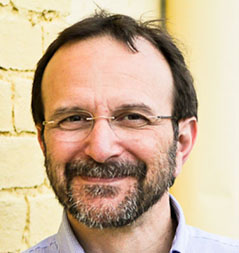TWiM explores the plasticity of the adult human small intestinal stoma microbiota, and survival and rapid resuscitation that permit limited productivity in desert microbial communities.
On this episode of TWiM, a charcuterie invasion, and how that acid in your stomach may protect from the invading hordes of microbes.
TWiM reveals a new population in the blue cheese-making fungus Penicillium roqueforti and identification of a quorum-sensing autoinducer and siderophore in uropathogenic Escherichia coli.
TWiM reveals housefly dispersal of antimicrobial resistant bacteria, and a reproductive organ in squid linked to symbiotic bacteria.
TWiM reveals high rates of co-transformation of plasmids in E. coli overturns the clonality myth, and bacterial membrane vesicles as a novel strategy for extrusion of the antimicrobial bismuth in H. pylori.
Petra Levin joins TWiM to tell three stories from her laboratory: how starvation induces shrinkage of the bacterial cytoplasm; plasticity of E. coli cell wall and how it influences antibiotic resistance across different environments; and induction of antibiotic resistance by Triclosan.
TWiM reveals how temporal shifts in antibiotic resistance elements govern phage-pathogen conflicts, and the intracellular localization of toxin-antitoxin proteins in E. coli.
Foodie TWiM reveals that bacteria in human saliva are major components of Ecuadorian indigenous beers, and an unusual E. coli that produces atypical light cream-colored colonies in chromogenic agar.
The TWiM team explains an experimental vaccine to prevent E. coli urinary tract infections, and the remarkable three-way symbiosis of narnaviruses, bacteria, and fungi.
How a bacterium helps dengue virus replicate in the mosquito gut, and minicells as a damage disposal mechanism in E. coli.


